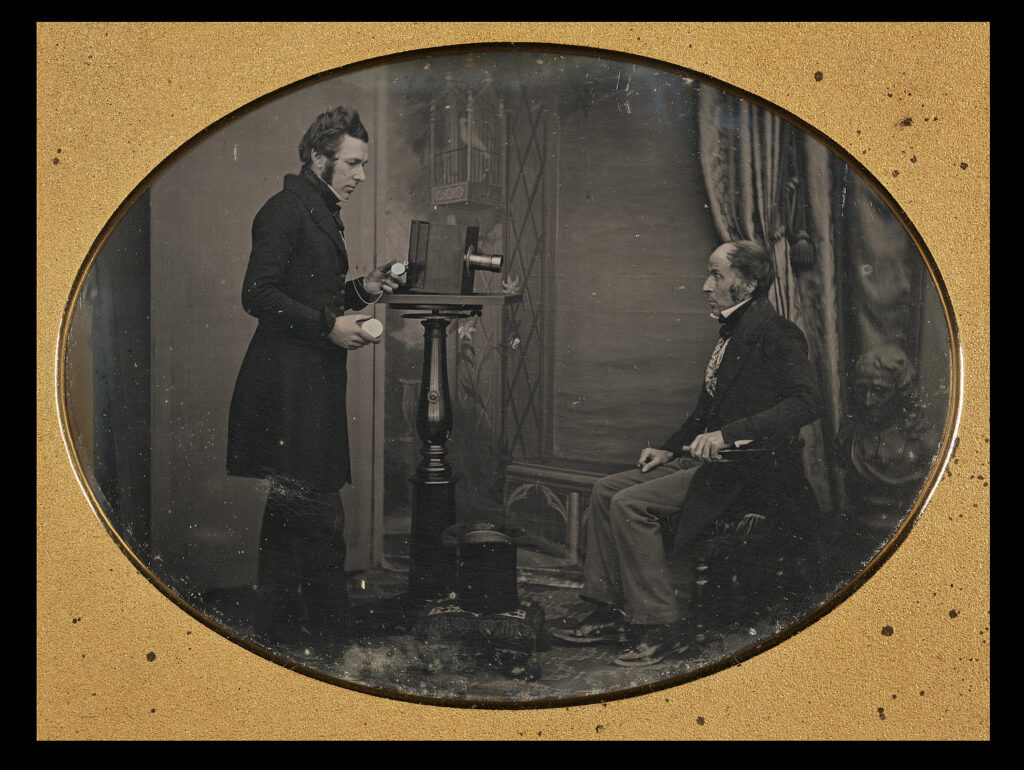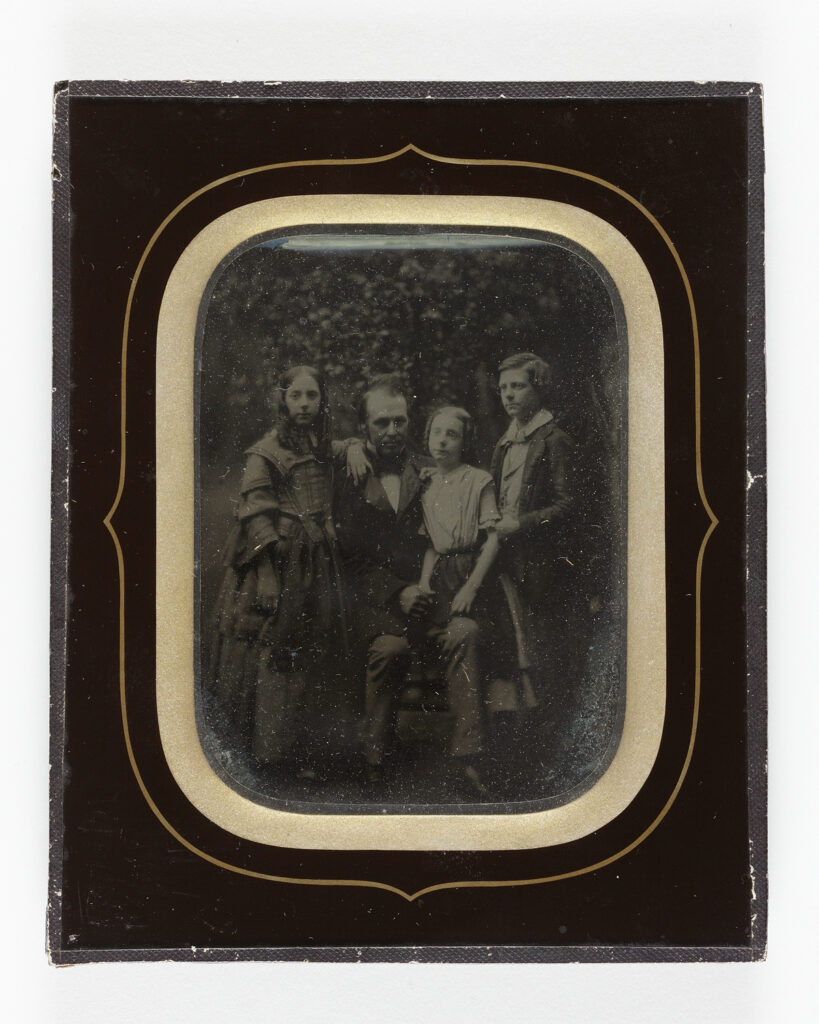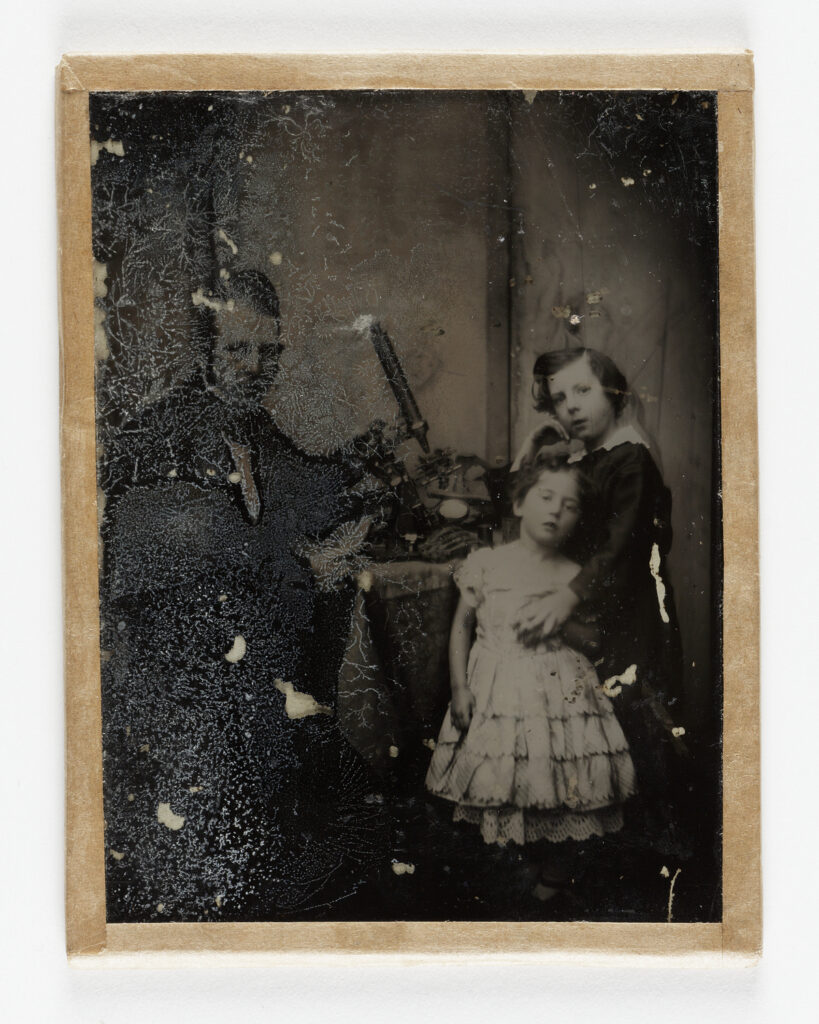Jabez Hogg (1817–1899) was an ophthalmic surgeon, editor and early photography enthusiast. In the early 1840s Hogg was captured making a portrait in Richard Beard’s studio in London. This daguerreotype is one of the first images of a photographer at work—and can be interpreted as a kind of self-portrait.
One of the first proper ‘selfies’ was made by Robert Cornelius, who sat motionless for between three and 15 minutes to capture his own likeness in 1839 . The Daguerreotype process was far from instantaneous. It involved many steps, including carefully buffing a silver plate and exposure to dangerous chemicals.
Hogg published his experiments in photographic processes in a pamphlet with the catchy title ‘A practical manual of photography: containing a concise history of the science and its connection with optics, together with simple and practical details for the production of pictures by the action of light upon prepared surfaces of paper, glass, and silvered plates, by the processes known as the daguerreotype, calotype, collodion, albumen, etc’.

Hogg’ continued to make daguerrotypes including this framed portait of his family, taken around 1845.

The daguerrotype process was gradually replaced by the wet collodion process. This new way of creating images used glass plates, covered with a sticky solution called collodion. These plates were developed in a camera when wet, hence the name. Metal plates could also be used in a similar process, creating a image called a ‘tin type’ or ferrotype .
Hogg was an early adopter of the wet plate process, making a portrait of of himself sat next a microscope, with his childen Walter and Nellie, in the early 1850s. Hogg trained in medicine and published scientific works about the microscope, which he used as a tool for his research on the human eye. The surface on this image has detiorated over time, as the image wasn’t kept in a case.

During this time Hogg also made this studious self-portrait, using the ambrotype process. Taken together these photographs provide a rare glimpse into the life of one photography’s early champions.